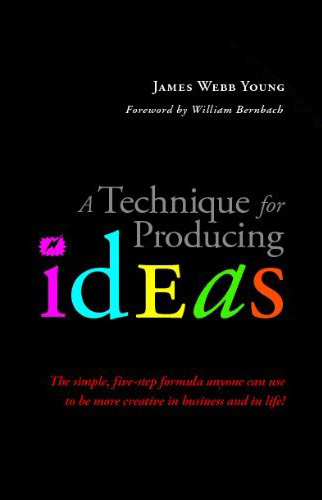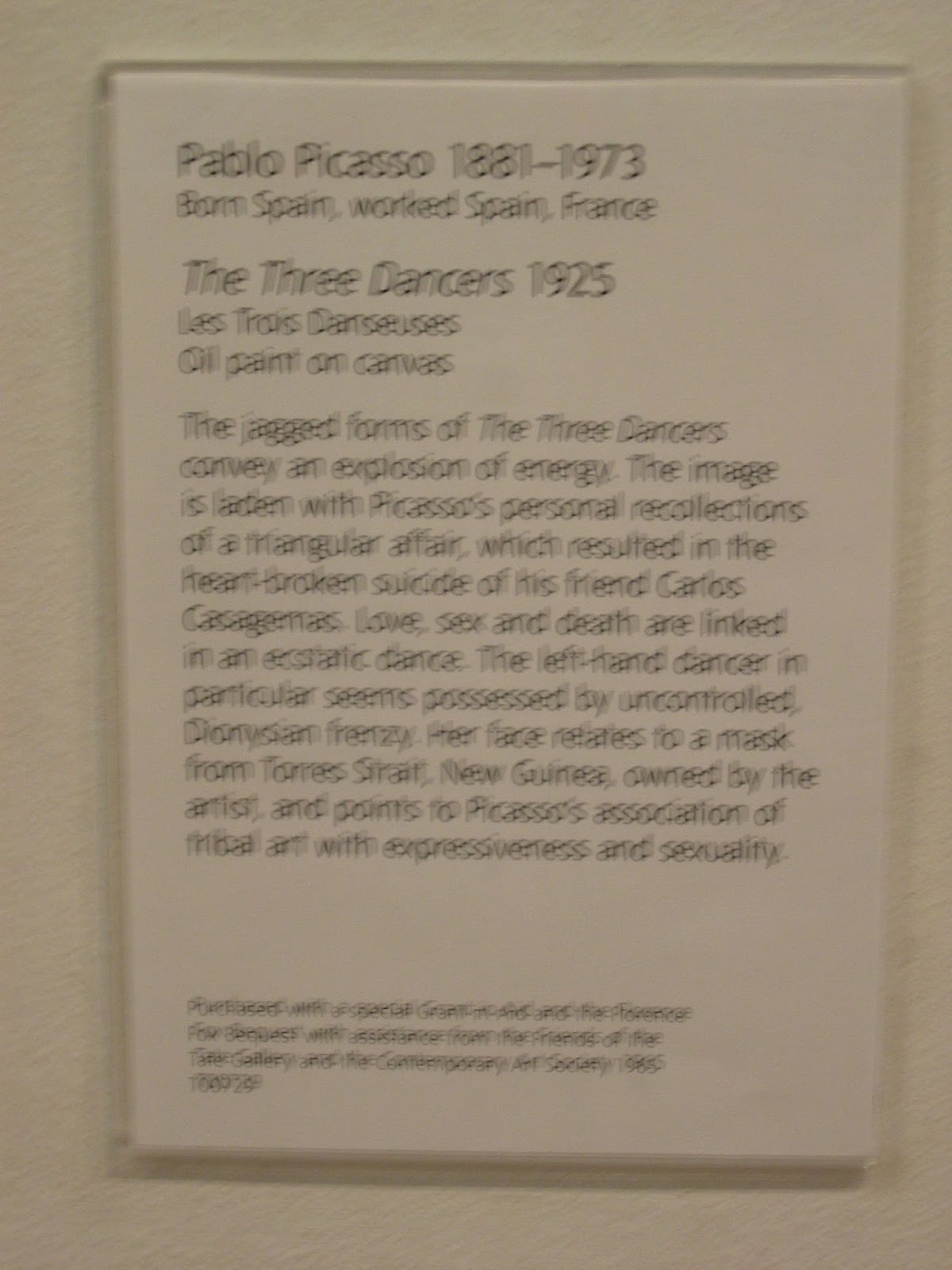A 5-Step Technique for Producing Ideas circa 1939
by Maria Popova
“The habit of mind which leads to a search for relationships between facts becomes of the highest importance in the production of ideas.”
 Literature is the original “inter-net,” woven of a web of allusions, references, and citations that link different works together into an endless rabbit hole of discovery. Case in point: Last week’s wonderful field guide to creativity,Dancing About Architecture, mentioned in passing an intriguing old book originally published byJames Webb Young in 1939 — A Technique for Producing Ideas (public library), which I promptly hunted down and which will be the best $5 you spend this year, or the most justified trip to your public library.
Literature is the original “inter-net,” woven of a web of allusions, references, and citations that link different works together into an endless rabbit hole of discovery. Case in point: Last week’s wonderful field guide to creativity,Dancing About Architecture, mentioned in passing an intriguing old book originally published byJames Webb Young in 1939 — A Technique for Producing Ideas (public library), which I promptly hunted down and which will be the best $5 you spend this year, or the most justified trip to your public library.
Young — an ad man by trade but, as we’ll see, a voraciously curious and cross-disciplinary thinker at heart — lays out with striking lucidity and clarity the five essential steps for a productive creative process, touching on a number of elements corroborated by modern science and thinking on creativity: its reliance on process over mystical talent, itscombinatorial nature, its demand for a pondering period, its dependence on the brain’s unconscious processes, and more.
Right from the introduction, original Mad Man and DDB founder Bill Bernbach captures the essence of Young’s ideas, with which Steve Jobs would have no doubt agreed when he proclaimed that “creativity is just connecting things”:
Mr. Young is in the tradition of some of our greatest thinkers when he describes the workings of the creative process. It is a tribute to him that such scientific giants as Bertrand Russell and Albert Einstein have written similarly on this subject. They agree that knowledge is basic to good creative thinking but that it is not enough, that this knowledge must be digested and eventually emerge in the form of fresh, new combinations and relationships. Einstein refers to this as intuition, which he considers the only path to new insights.
To be sure, however, Young marries the intuitive with the practical in his formulation:
[T]he production of ideas is just as definite a process as the production of Fords; that the production of ideas, too, runs on an assembly line; that in this production the mind follows anoperative technique which can be learned and controlled; and that its effective use is just as much a matter of practice in the technique as is the effective use of any tool.
In a chapter on training the mind, Young offers:
In learning any art the important things to learn are, first, Principles, and second, Method. This is true of the art of producing ideas.Particular bits of knowledge are nothing, because they are made up [of] so called rapidly aging facts. Principles and method are everything.[…]So with the art of producing ideas. What is most valuable to know is not where to look for a particular idea, but how to train the mind in the method by which all ideas are produced and how to grasp the principles which are at the source of all ideas.
But the most compelling part of Young’s treatise, in a true embodiment of combinatorial creativity, builds upon the work of legendary Italian sociologist Vilfredo Pareto (of Pareto principle fame) and his The Mind and Society. Young proposes two key principles for creating — that an idea is a new combination and that the ability to generate new combinations depends on the ability to see relationships between different elements.
The first [principle is] that an idea is nothing more nor less than a new combination of old elements.[…]The second important principle involved is that the capacity to bring old elements into new combinations depends largely on the ability to see relationships. Here, I suspect, is where minds differ to the greatest degree when it comes to the production of ideas. To some minds each fact is a separate bit of knowledge. To others it is a link in a chain of knowledge. It has relationships and similarities. It is not so much a fact as it is an illustration of a general law applying to a whole series of facts.[…]Consequently the habit of mind which leads to a search for relationships between facts becomes of the highest importance in the production of ideas.
STEP 1: GATHERING RAW MATERIAL
Young talks about the importance of building a rich pool of “raw material” — mental resources from which to build new combinations — in a way that resonates deeply with the Brain Pickings founding philosophy, and also articulates the increasing importance of quality information filters in our modern information diet. This notion of gathering raw material is the first step in his outline of the creative process:
Gathering raw material in a real way is not as simple as it sounds. It is such a terrible chore that we are constantly trying to dodge it. The time that ought to be spent in material gathering is spent in wool gathering. Instead of working systematically at the job of gathering raw material we sit around hoping for inspiration to strike us. When we do that we are trying to get the mind to take the fourth step in the idea-producing process while we dodge the preceding steps.
Even seven decades into the past, Young knew that the future belongs to the curious. His insistence on the importance of curiosity would make Richard Feynman nod in agreement:
Every really good creative person…whom I have ever known has always had two noticeable characteristics. First, there was no subject under the sun in which he could not easily get interested — from, say, Egyptian burial customs to modern art. Every facet of life had fascination for him. Second, he was an extensive browser in all sorts of fields of information. For it is with the advertising man as with the cow: no browsing, no milk.[…]The process is something like that which takes place in the kaleidoscope. The kaleidoscope, as you know, is an instrument which designers sometimes use in searching for new patterns. It has little pieces of colored glass in it, and when these are viewed through a prism they reveal all sorts of geometrical designs. Every turn of its crank shifts these bits of glass into a new relationship and reveals a new pattern. The mathematical possibilities of such new combinations in the kaleidoscope are enormous, and the greater the number of pieces of glass in it the greater become the possibilities for new and striking combinations.
(I once used a similar analogy with LEGO.)
STEP 2: DIGESTING THE MATERIAL
In his second stage of the creative process, digesting the material, Young affirms Paola Antonelli’s brilliant metaphor of the curious octopus:
What you do is to take the different bits of material which you have gathered and feel them all over, as it were, with the tentacles of the mind. You take one fact, turn it this way and that, look at it in different lights, and feel for the meaning of it. You bring two facts together and see how they fit. What you are seeking now is the relationship, a synthesis where everything will come together in a neat combination, like a jig-saw puzzle.
STEP 3: UNCONSCIOUS PROCESSING
In his third stage of the creative process, Young stresses the importance of making absolutely “no effort of a direct nature”:
It is important to realize that this is just as definite and just as necessary a stage in the process as the two preceding ones. What you have to do at this time, apparently, is to turn the problem over to your unconscious mind and let it work while you sleep.[…][W]hen you reach this third stage in the production of an idea, drop the problem completely and turn to whatever stimulates your imagination and emotions. Listen to music, go to the theater or movies, read poetry or a detective story.
STEP 4: THE A-HA MOMENT
Then and only then, Young promises, everything will click in the fourth stage of the seemingly serendipitous a-ha! moment:
Out of nowhere the Idea will appear.It will come to you when you are least expecting it — while shaving, or bathing, or most often when you are half awake in the morning. It may waken you in the middle of the night.
STEP 5: IDEA MEETS REALITY
Young calls the last stage “the cold, gray dawn of the morning after,” when your newborn idea has to face reality:
It requires a deal of patient working over to make most ideas fit the exact conditions, or the practical exigencies, under which they must work. And here is where many good ideas are lost. The idea man, like the inventor, is often not patient enough or practical enough to go through with this adapting part of the process. But it has to be done if you are to put ideas to work in a work-a-day world.Do not make the mistake of holding your idea close to your chest at this stage. Submit it to the criticism of the judicious.When you do, a surprising thing will happen. You will find that a good idea has, as it were, self-expanding qualities. It stimulates those who see it to add to it. Thus possibilities in it which you have overlooked will come to light.
* * *
Years later, upon reissuing A Technique for Producing Ideas, Young recounted the many letters he had gotten from “poets, painters, engineers, scientists, and even one writer of legal briefs” who had found his technique empowering and helpful. But what’s perhaps most interesting is the following note he made to the postscript of a reprint:
From my own further experience in advertising, government, and public affairs I find no essential points which I would modify in the idea-producing process. There is one, however, on which I would put greater emphasis. This is as to the store of general materials in the idea-producer’s reservoir.[…]I am convinced, however, that you gather this vicarious experience best, not when you are boning up on it for an immediate purpose, but when you are pursuing it as an end in itself.
















































